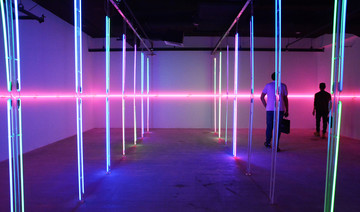JEDDAH: The Athr Gallery is showcasing three independently curated solo shows, sponsored by the Cultural Development Fund, until April.
The work of two Saudi nationals, Daniah Al-Saleh, Asma Bahmim, and one Kuwaiti national, Farah Behbehani, is being featured at the gallery.
Al-Saleh’s show is titled “Keep Smiling,” which addresses the use of non-verbal symbols in modern communication in an increasingly digitized world. “Our method of communication might have changed from a clay tablet to a smart tablet or smartphone. It seems that we as a society have accepted emojis as part of our daily life,” she told Arab News.
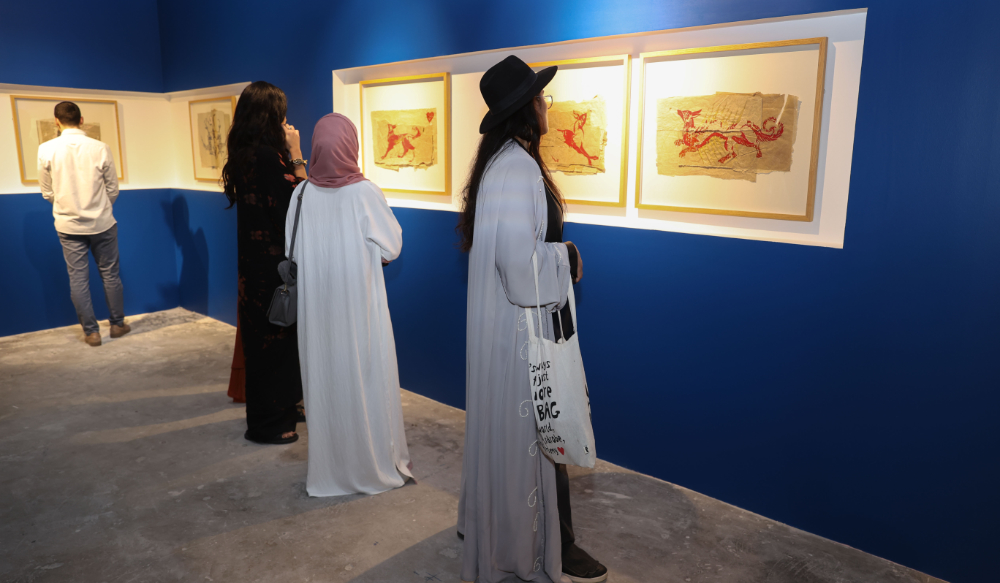
The work of two Saudi nationals, Daniah Al-Saleh, Asma Bahmim, and one Kuwaiti national, Farah Behbehani, is being featured at the gallery, which will be displayed until April. (Photo/Adnan Salem Mahdali)
“We have collectively evolved by using a digital version of hieroglyphics in the form of pictographic codes and emoticons that offers the recipient insights on the possible mood of the sender.
“It addresses the context of emojis and ubiquitousness and the usage of the pop culture and its usage of emojis in everyday text, everyday communication. In here, I’m questioning the use of emojis. Is it a sort of mask, is it sort of proxy for our emotion or mental state? Or does it really help in exploring our emotion and relating to the other — communicating better messages? I leave the answers to the viewer,” she said.
Bahmim’s work, titled “Fantasia: A World Between Reality and Imagination” is also attention-grabbing.
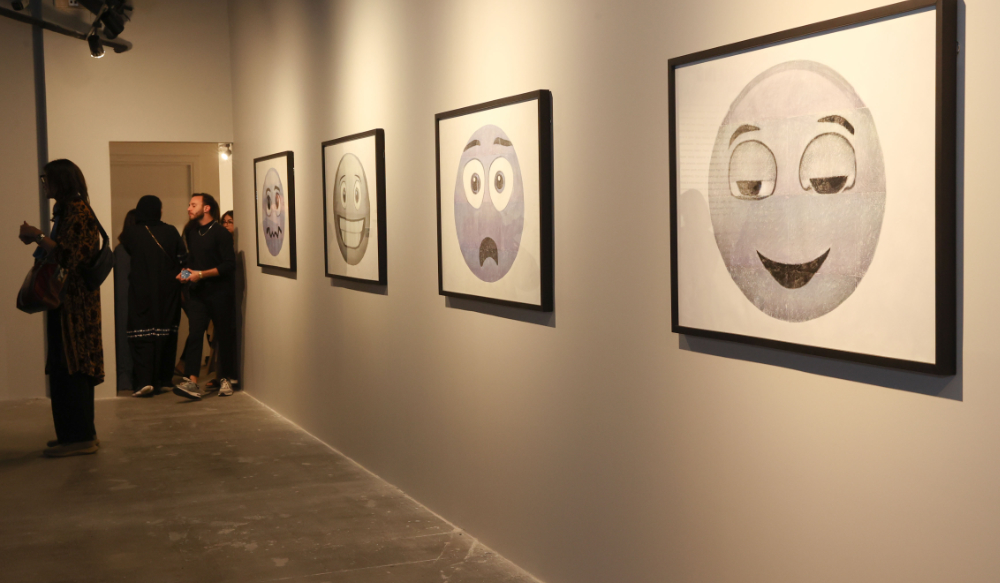
The work of two Saudi nationals, Daniah Al-Saleh, Asma Bahmim, and one Kuwaiti national, Farah Behbehani, is being featured at the gallery, which will be displayed until April. (Photo/Adnan Salem Mahdali)
Her work encapsulates the essence of the Islamic Arts Biennale spirit. She uses animals to generate fictional dialogues and highlights the importance of the tradition of storytelling.
“Fantasia was definitely a passion project for me. The medium and technicalities of it serve an essential role in the message I wanted to bring out, which was a culmination of a lifetime of exposure and research in storytelling,” Bahmim said of her solo show at ATHR.
“I wanted to bring to life the daydreams that crossed my mind going through a story in a book. I wanted the viewer to be lost in the fantasies, not just in the story but the backstory of the elements of these stories,” she told Arab News.
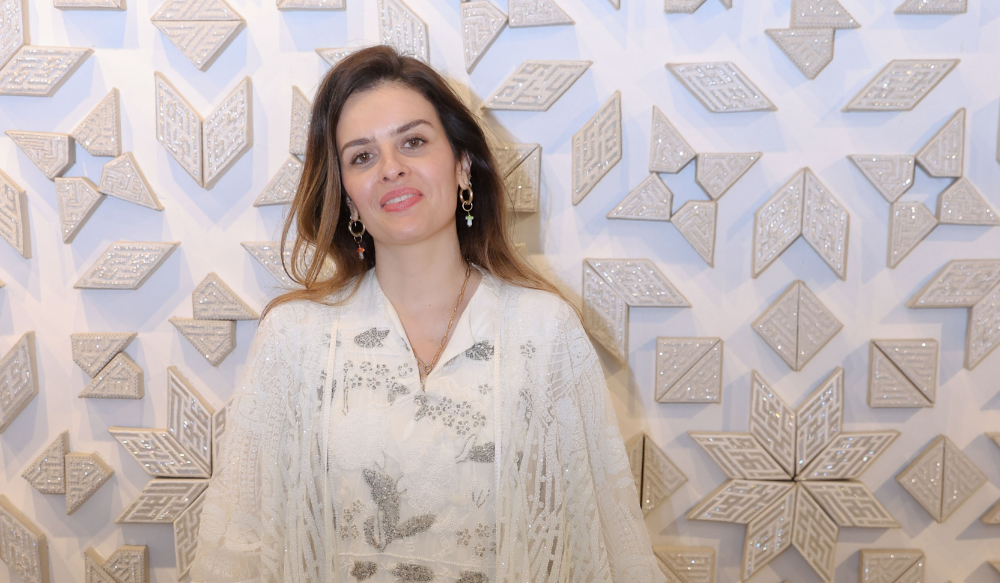
Farah Behbehani has been using Islamic cultural forms and Arabic words as inspiration. (Photo/Adnan Salem Mahdali)
Behbehani’s elegant work, transcending time and space, is aptly titled “And Make Me Light,” inspired by words that she has masterfully re-interpreted.
“The concept of the show is returning back to light through spirituality. One of my biggest works is based on a dua (prayer).”
“Basically for this entire poetic verse, I took the words of this verse and I incorporated it into the geometry design; each word has been transformed in square Kufic calligraphy to fit within the geometry of this work,” she told Arab News as her young son stood by, his eyes alight with pride.
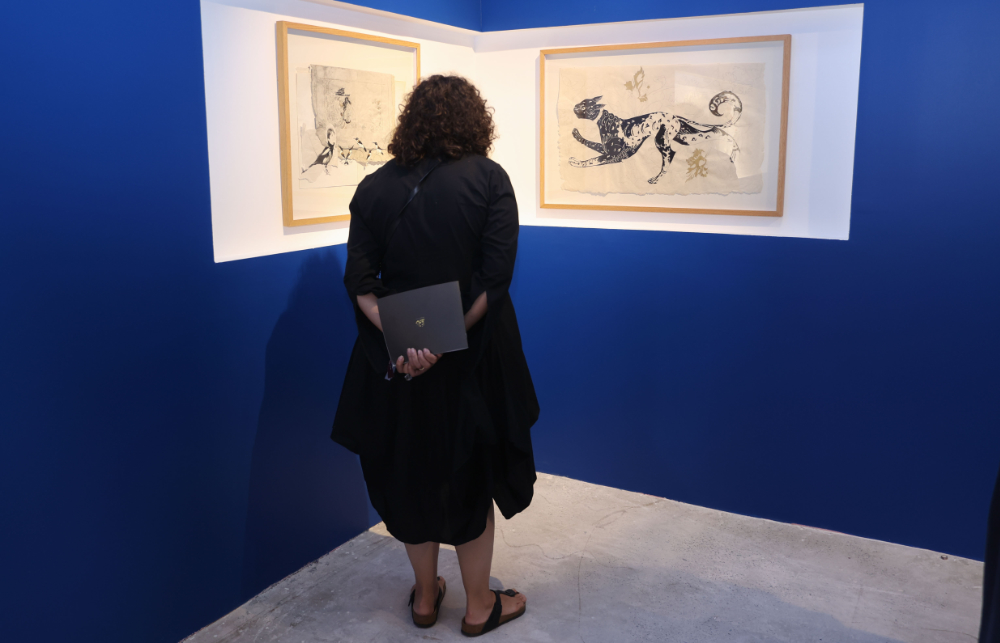
Visitor appreciating Asma Bahmim’s Fantasia. (Photo/Adnan Salem Mahdali)
Behbehani has been using Islamic cultural forms and Arabic words as inspiration for decades.
Using Qur’anic verses, poetry and prose, her intricate calligraphic designs are enveloped into each of the seven administration buildings at Kuwait University.
The buildings served as “stoic structures” for her art as “an ephemeral play of light and shadow through a maze of letters that draw upon references from Islamic literature.”
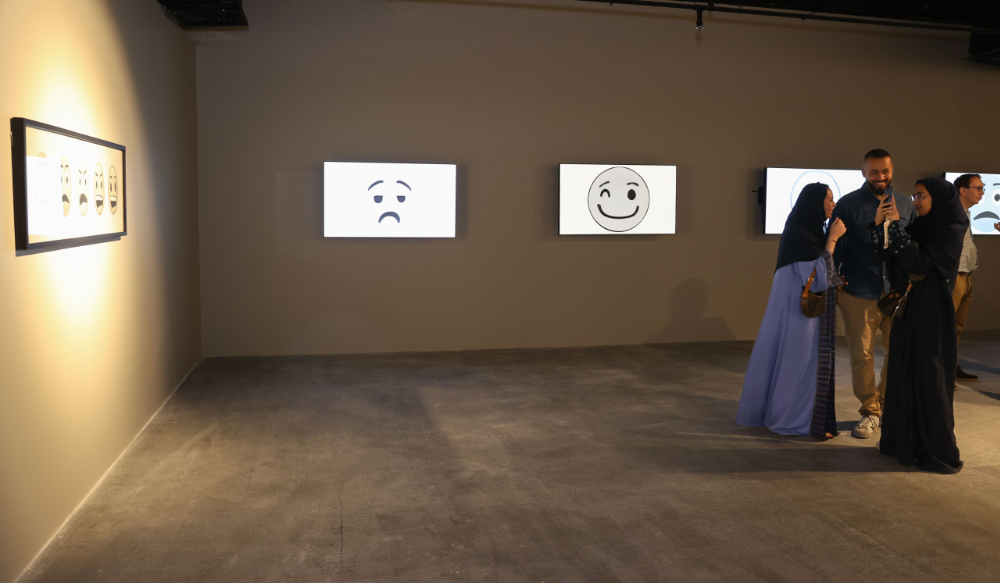
The work of two Saudi nationals, Daniah Al-Saleh, Asma Bahmim, and one Kuwaiti national, Farah Behbehani, is being featured at the gallery, which will be displayed until April. (Photo/Adnan Salem Mahdali)
Behbehani’s exhibitions and shows are displayed both in the MENA region and worldwide. She is the author of the 2009 book “The Conference of the Birds,” based on the 12th-century Sufi allegorical poem. Her book interpreted the classic text through illustrations in Jali Diwani script.
Behbehani is also participating in the Islamic Arts Biennale this month with her “Path of Light” three-paneled kinetic piece, which was inspired by a poetic verse from writer Ahmed Shawi’s tribute to Prophet Muhammad.
The opening of the three solo shows comes as part of the inaugural Islamic Arts Biennale 2023 at the Western Hajj Terminal in Jeddah.
Athr gallery issued this statement exclusively for Arab News: “Our relationship with the Diriyah Biennale Foundation has been strong since the inception of the foundation and its first edition in 2021.
“Many artists have been showcased at the biennale, with artists such as Ahmed Mater being in both editions. In the current edition (Islamic Arts Biennale 2023), we have seven artists featured, again highlighting the diversity of our roster and their practices.”
“We have aligned with DBF to be included on their schedule and to have the openings of our exhibitions to coincide with the opening program of the biennale as a way to reinforce the importance of a holistic approach to supporting the arts.
“Athr has been established since 2009, and we are now glad that newly established entities like DBF and their activities amplify the efforts of the private sector.”
For more information on hours of operation and to book an appointment, visit Athr’s social media channels and the Diriyah Biennale page.





